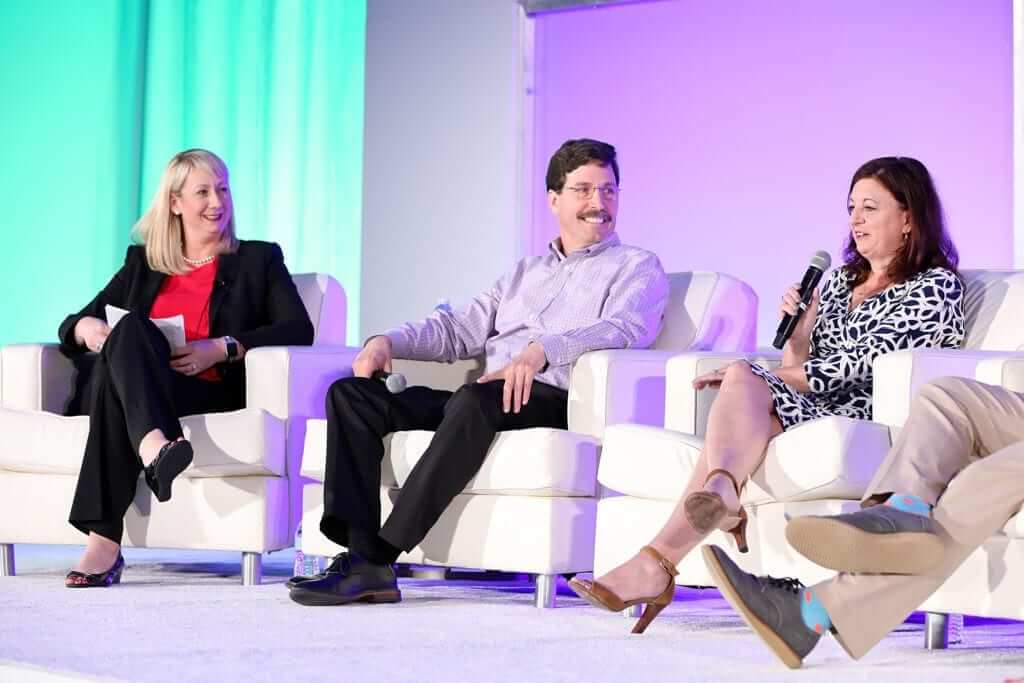The Community Spotlight Series highlights some of the amazing members of the Fusion community and the great things they are doing in the industry. Our next spotlight is with Tracey Judge, Senior Director – Compliance and Risk Management, at TransUnion.

Developing a business continuity program from scratch is not an easy task. However, neither is it impossible: it simply takes intentionality. If you and your business continuity team (if you have a team to work with) feel like you are foundering because you are trying to create something from nothing, take your cue from Tracy Judge, director of compliance program management at TransUnion.
For over a decade, Tracy has been the face of enterprise issue management at TransUnion, a leading global risk and information solutions provider to businesses and consumers. But she was not handed a mature business continuity program on a silver platter to work with. She started off with nothing more than a thin red folder placed on her desk titled “Business Continuity.” Here are the principles she followed to take that red folder and expand it into a full-fledged enterprise issue management program.
1. View the challenge as an opportunity.
Creating an outstanding business continuity program starts with the right mindset. If you view the task as a burden or obstacle, you will approach it with dread and heaviness. If you approach program development as an opportunity, you will be filled with energy, creativity, and passion. Tracy recalls that when business continuity regulations went into effect that impacted TransUnion, she considered it an “obvious opportunity” – and jumped in feet first without a moment’s hesitation.
2. Go where the experts are.
Online learning is a great place to start adding to your knowledge store, but there is no substitute for engaging personally with the people who have walked the path before you. Tracy explains, “I joined every business continuity organization I could find, attended conferences, and became a ‘thief’ – stealing best practices, copying program structures, and taking advice from everyone I met.”
3. Choose the right people to work with.
“It’s impossible for any single person to do this by themselves,” Tracy states emphatically. “You have to admit that right from the beginning. You don’t know what you don’t know. So you have to find people who do know what you don’t know. This is not about putting bodies on a team; it is about building a team that is aligned with your objectives and has the skills and expertise to get you there. Your team may be composed of internal employees and/or an external vendor.”
4. Think beyond the product when selecting a vendor.
Features and benefits are unquestionably important in a business continuity software tool, but they are not the only factors to weigh when making a decision about which vendor to choose. Tracy comments, “The Fusion Framework System is a great product, but the reason we ultimately selected Fusion Risk Management over other solutions is because they are the best team. We love the tool, but it was and is more about having a partner who can help us move forward.”
5. Realize that your program will expand over time.
When you start building a business continuity program, you probably have a very specific set of goals you are working toward. And that is good. But always keep in mind that the program will likely expand. Tracy recalls, “In those early years, we were focused on certain segments of our business in the U.S. Now, we’re all over the globe. You need to think about expansion when you choose a vendor and a software solution. If we did not have Fusion, we wouldn’t have been able to expand and multiply plans so quickly. Fusion made it easy to do so with their expertise, functionality, and flexibility.”
6. Keep your head up and your eyes open.
Tracy is very clear about how she and her team works. She declares, “I hate when people say ‘put your head down and work hard,’ because in my experience if your head is down you just might miss the next opportunity. So we keep building and working but we never put our heads down! Keep your head up and look for the next opportunity.”
7. Encourage employee engagement from the start.
An effective business continuity program has the support and engagement of the company’s employees. For that reason, Tracy told TransUnion’s executive team, “If we’re going to do this, I want to start with crisis management. I want to show our employees that we have processes and plans in place to protect them, and then we’ll get to protecting our business.” She states that by starting this way, it helped employees feel that they were important. They were then much more willing to help her build out the rest of the plans and processes the company needed.
8. Make a business case for program development.
It is not uncommon for company leadership to push for business continuity (goaded often by regulatory pressures or news headlines), but to fail to give it appropriate funding or resources. Tracy explains the importance of making a business case to the leadership team: “When you build something and can present how that program is doing more than ‘keeping the lights on,’ but is truly adding value to the business, you are able to gain leadership support from the highest levels of the organization to continue moving forward.”
9. Take on new challenges.
With new issues, threats, and complexities arising in business every day, a business continuity program is never finished. Tracy confirms, “We have every intention to keep growing and finding creative ways to leverage the capabilities of the Fusion Framework System. Any time a new matter comes up, my team is able to say with confidence, “We’ll take that. We can build that program. We’ve got it. No worries!”
10. Keep the bigger picture in mind.
Perspective is everything when building – and going beyond – a business continuity program. Tracy concludes, “When I started out, I thought that business continuity was the overarching program, but that isn’t the case. Business continuity is the beginning; it is a response to specific types of issues. But there are other matters you can embrace as well, such as compliance policies, vendor management, records management, crisis management, and data issue response. When you build a program from the beginning with this bigger picture in mind, you pave the way to provide immeasurable value to your company and your customers.”
For more information, read the full case study: TransUnion’s Transformation: The Amazing Journey of One Company and One Woman from Business Continuity to Enterprise Issue Management.




